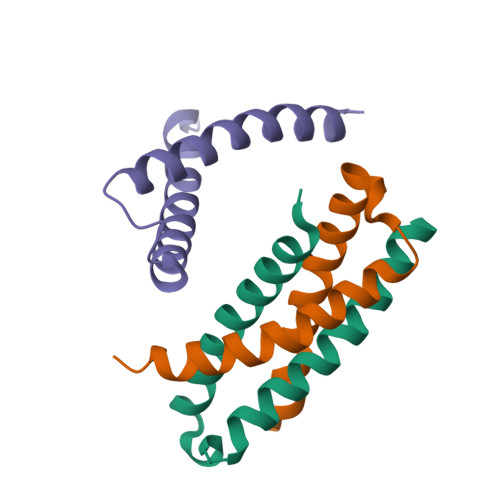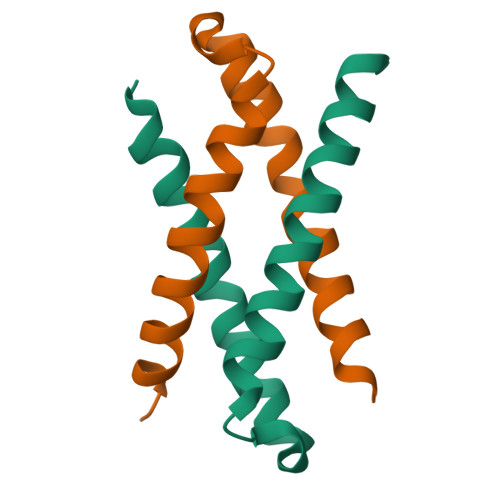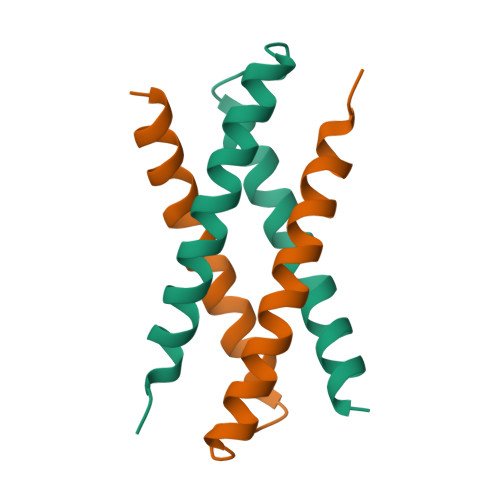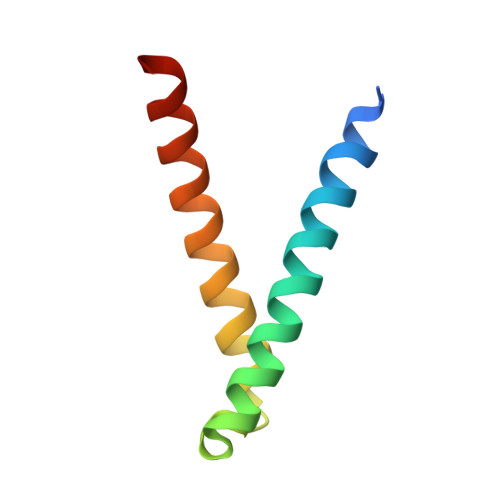A phenylalanine zipper mediates APS dimerization.
Dhe-Paganon, S., Werner, E.D., Nishi, M., Hansen, L., Chi, Y.-I., Shoelson, S.E.(2004) Nat Struct Mol Biol 11: 968-974
- PubMed: 15378031
- DOI: https://doi.org/10.1038/nsmb829
- Primary Citation of Related Structures:
1Q2H - PubMed Abstract:
The APS, SH2-B and LNK proteins are adapters that activate and modulate receptor tyrosine kinase and JAK/STAT signaling. We now show that a conserved N-terminal domain mediates APS homodimerization. We determined the crystal structure of the dimerization domain at a resolution of 1.7 A using bromide ion MAD phasing. Each molecule contributes two helices to a compact four-helix bundle having a bisecting-U topology. Its most conspicuous feature is a stack of interdigitated phenylalanine side chains at the domain core. These residues create a new motif we refer to as a 'phenylalanine zipper,' which is critical to dimerization. A newly developed bridging yeast tri-hybrid assay showed that APS dimerizes JAK2, insulin receptor and IGF1 receptor kinases using its SH2 and dimerization domains. Dimerization via the phenylalanine zipper domain provides a mechanism for activating and modulating tyrosine kinase activity even in the absence of extracellular ligands.
Organizational Affiliation:
Joslin Diabetes Center and Department of Medicine, Harvard Medical School, Boston, Massachusetts 02215, USA.

















